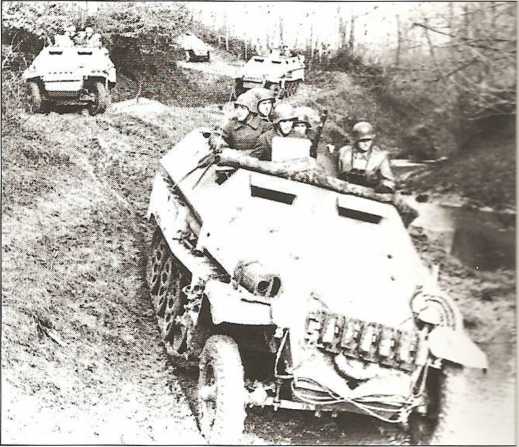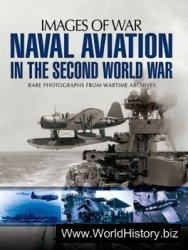There were numerous lessons to be learnt from World War I and the inter-war years. The war had illustrated the vulnerability of unsupported tanks and the dangers of deploying tanks in penny packets. The French decided to use their tanks in a subordinate role to the supporting infantry. The British tank men grew disillusioned with cooperation with other arms and were inclined to believe tanks could operate independently. Meanwhile, the British military authorities were inclined to spend their meagre peacetime budget elsewhere. Only in Germany were the correct conclusions about mechanisation - particularly tank-infantry cooperation - drawn, and the key exponent was Heinz Guderian.
Under the terms of the World War I peace settlement signed at Versailles in June 1919, Germany was forbidden the possession of important weapon systems such as aircraft, U-boats and heavy artillery. The German Army was restricted to 100,000 men. Crucially, the possession, purchase or development of tanks was forbidden. Although the small size of the German Army rankled with the German military, the chief of the German staff. General Hans von Seekt, was determined that the Reichswehr, as the German armed forces were now called, be as potent a military force as its size allowed. Its small size also allowed concentration on quality in both training and military techniques. There is no doubt that von Seekt intended the Reichswehr to provide a cadre for a future expansion of the German Army.
Eager to support new military ideas, von Seekt gave considerable backing to Germany’s leading tank enthusiast Heinz Guderian. Guderian had spent the early part of the 1920s studying the works of British armoured warfare theorists such as Liddell Hart and J. F.C. Fuller. While working at the Inspectorate of Motorised Troops, Guderian tried to apply their theories to the German Army. In 1924 he suggested transforming the motorised units of the supply troops he commanded into combat formations. He was told by his superior von Natzmer; ‘To hell with combat, they are supposed to carry flour.’ However, von Seekt was supportive and a core of German senior officers began to take seriously the possibility of conducting mobile warfare based around armoured vehicles. In about 1925, a limited programme of training and close cooperation began, and the following year the Germans held full-scale manoeuvres with mechanised forces. These exercises were hampered by a complete lack of tanks and other types of armoured vehicles, all still forbidden under the Treaty of Versailles. In the place of tanks, soldiers had to carry cardboard tank silhouettes. By 1928 the Germans had progressed to using ‘motorised dummies of

Above: The stereotypical image of the panzergrenadiers - an armoured halftrack (Sd Kfz 251) on the Eastern Front, loaded with troops. In reality, panzergrenadiers often went into combat in soft-skinned lorries, or even walked.
Sheet metal’. As Guderian himself noted, despite his theorising and preoccupation, he was ‘totally lacking in all practical experience of tanks. ..I had never even seen inside of onel
There was no question of direct access to Western desigr-so the Germans turned to the Soviet Union in an effon ;o experiment with tank design away from the pndng eves o: Britain and France. In 1926 the Germans established a ra~c school at Kazan, deep in the Soviet Union, and here Germany’s first post-war tanks were built. Most ts'ere lirle more than one-off experiments, but Guderian, leho bv 1932 was a lieutenant colonel and chief of staff at the Inspecrorar; of Motorised Troops, and Captain Pirner, responsible :cr tank production, had worked out a programme of ecuip-ment for tank or panzer divisions that Guderian was eager m establish. In the meantime, they agreed on the building or a stop-gap light tank based on the Carden Lloyd tankette, designated the Pz Kpfw I. Hitler, who came to power in 1933. gave the Panzer Pz Kpfw I his backing, remarking: 'Tnat's what I need. That’s what I want to have.’ For Guderian - this cheap and simple vehicle was perfect for training and experimental manoeuvres.
Hitler cheerfully disregarded the restrictions of 3 ensanles and a massive expansion programme of the German armed forces took place. Using his light tanks, the Pz Kpf. s' I and later the Pz Kpfw II, Guderian could develop his theories e: armoured warfare through practical experience on exerriscs. He was unique amongst armoured warfare theorists in the 1920s due to the support he received from his superiors and his government. Admittedly, Marshal Tukhachevsky had trained and equipped large armoured formations in the Soviet Union, but he and his theories disappeared during Stalin s purge of the Red Army in the late 1930s. In 1935, the French formed the world’s first armoured division. In response, the Germans formed three. There were not really enough tanks or vehicles available to equip these formations. Nonetheless, Guderian had by 1937 enough experience of operating these forces to put his theories of armoured warfare in writing in his seminal work Achtung - Panzer!




 World History
World History









